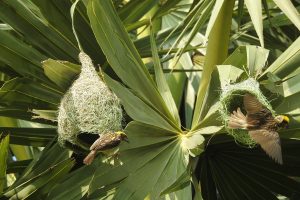WBCERC fines diagnostic clinic Rs 3L for negligence in colonoscopy
The WBCERC has directed the management of the clinic to pay the money to the patient as compensation in eight installments.
The decline in the Baya weaver birds’ population has largely been due to the loss of these thorny trees. Besides, the increasing use of pesticides in agriculture fields is also spelling doom for them.

(Photo: SNS)
Green activists have expressed concern over the rampant felling of palm, date, and babul trees saying that the loss of these green covers has led the Baya weavers- a nesting bird in Odisha to the verge of extinction.

The population of chirpy pint-sized baya weaver birds, conferred protected status and listed in schedule IV of the Wildlife (Protection) Act, 1972, is steadily declining in the State as these thorny trees, which serve as nesting sites for Baya weavers, are fast disappearing.
As these trees, which have lesser economic values, are being cut down, these delicate birds are starved of congenial nesting spots.
Advertisement
The weaver birds prefer to nest on large and tall trees like coconut, date, and palm as the predators will find it tough to reach the thorny species.
The decline in the Baya weaver birds’ population has largely been due to the loss of these thorny trees. Besides, the increasing use of pesticides in agriculture fields is also spelling doom for them.
These birds perish as grain-feeding birds failed to withstand toxicity. Urbanization and the fast disappearance of trees have contributed to the shrinkage of their habitat, said Rabindranath Sahu, an environment conservation activist in the Ganjam district.
Baya birds permeated into socio-cultural life in Odisha inspiring many folk songs.
Their seasonal movements are largely determined by paddy and cereal cultivation which provides nesting materials and food. They also eat insects. The nesting season of this bird is from May to September coinciding with the monsoon and paddy cultivation, he added.
Advertisement